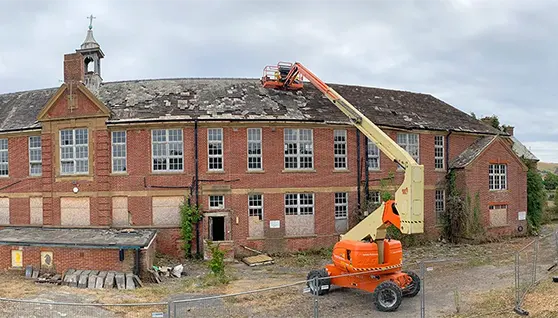
Isle of Purbeck History explore the past in Swanage & the Isle of Purbeck
Swanage is a seaside town located on the south coast of England, in the county of Dorset. The town has a rich history dating back to the pre Roman era, and has been shaped by a variety of different cultural influences throughout the centuries.
Burial mounds around the common of Corfe Castle suggest that the area was occupied from 6000 BC. The earliest known inhabitants of the area were the Celts, who settled in the region around 400 BC. The common also points to a later Celtic field system worked by the Durotriges tribe.
The Romans arrived in the area around AD 43, establishing a small settlement. This settlement was primarily used as a port for the transportation of goods and people, and it is believed that the Romans also mined the nearby Purbeck Hills for minerals such as iron and lead.
After the Romans left in the 5th century, the area was settled by the Anglo-Saxons. The town of Swanage was mentioned in the Domesday Book of 1086, and has been known as Swanawic, Swanwich and Sandwich until it was finally named Swanage.
During the Middle Ages, Swanage was a small fishing village that remained relatively isolated for many centuries. However, in the 18th and 19th centuries, the town grew and developed as a popular tourist destination. The first visitors were wealthy Victorians who came to Swanage to enjoy the sea and the beautiful countryside. The town's popularity as a tourist destination continued to grow throughout the 19th century, and by the early 20th century, Swanage had become a popular destination for middle-class families.
In the 20th century, Swanage continued to grow and develop as a tourist destination, and it also became a popular spot for holidaymakers from London and the surrounding areas. The town's population increased significantly during this period, and many new homes and businesses were built to accommodate the growing number of visitors.
Today, Swanage is a popular tourist destination known for its beautiful beaches, charming Victorian architecture, and rich history. The town is also home to several museums and heritage sites, including the Purbeck Mineral and Mining Museum near Corfe Castle, which tells the story of the town's industrial past. The town's popularity as a tourist destination has helped to preserve its unique character and heritage, and it continues to attract visitors from all over the world.
A brief history of the Isle of Purbeck from -8000 BC to present.
8000BC
First known settlement
The first known settlement of Dorset was by Mesolithic hunters, from around 8000 BC. Their populations were small and concentrated along the coast in the Isle of Purbeck, Weymouth, Chesil Beach, and along the Stour valley.

6000BC
Burial mounds around Corfe Common
Burial mounds around the common of Corfe Castle suggest that the area was occupied from 6000BC. The common also points to a later Celtic field system worked by the Durotriges tribe.

2800BC
Stonehenge
Stonehenge was built in several stages from 2800 - 1800 BC.

2000BC
Standing Stones at Rempstone
The bronze age Standing Stones at Rempstone erected. They are thought to date to around 2200-1400 BC
50
Roman Invasion
The Romans invade Britain. Evidence has been found showing Roman settlements in the Isle of Purbeck.

877
Danish fleet wrecked
A Danish fleet of ships is wrecked off of the coast at Swanage.
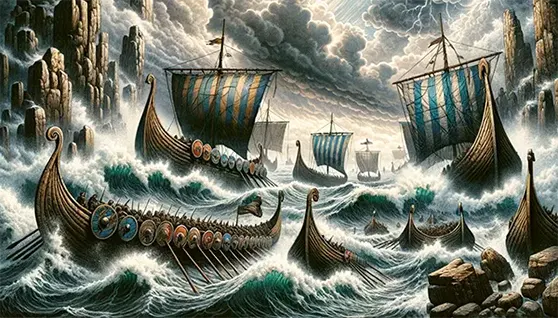
877
Anglo-Saxon Chronicle
The ancient Mill House and Pond, in the heart of Swanage, was first mentioned in the Anglo-Saxon Chronicle in this year.
18 Mar 978
Edward the Martyr
Edward the Martyr was king of the English from 975 until he was murdered in 978 probably at or near the mound on which the ruins of Corfe Castle now stand.
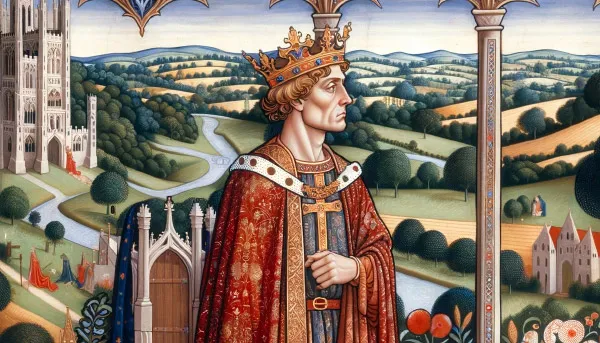
1080
Corfe Castle built
Corfe Castle was built by William the Conqueror shortly after the Norman conquest of 1066
1100
St. Nicholas of Myra church
The St. Nicholas of Myra church in Worth was first built in about 1100
1140
Norman Chapel built
The Norman Chapel at St Aldhelm's Head is built. The Chapel is named after the first bishop of Sherborne.
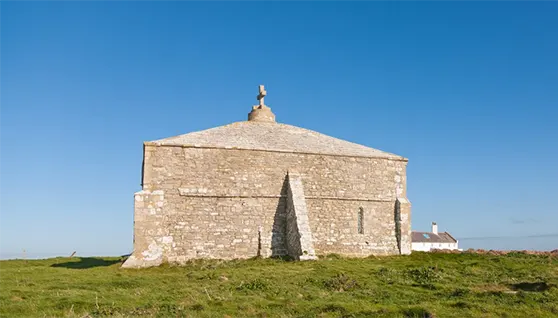
1200
Parish Church built
Original parish church built
1297
First Rector of Swanage
The Rev. Henry Terry was made the first Rector of Swanage.
1300
Godlingston Manor built
Godlingston Manor, the medieval house at the northern end of Swanage is built. It originally comprised of an open hall with a cross passage, service wing, tower and parlour. The tower is probably defensive and may predate the rest of the house.
1338
French Invade
Swanage was burned and plundered by French raiders
1594
The Bells
One of the earliest recorded church bells was installed in St Mary's Church.
1615
King James 1st
King James was the last king to hunt in the Isle of Purbeck.
1643
First siege of Corfe Castle
First siege of Corfe Castle
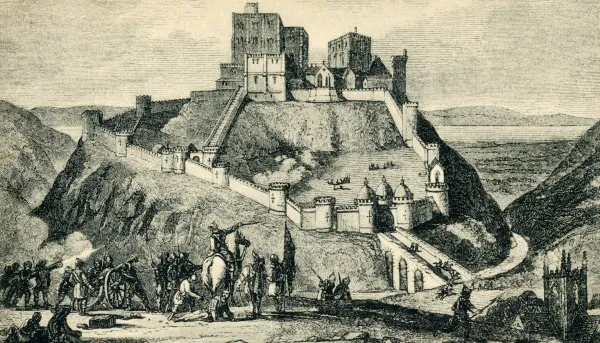
1646
Second siege of Corfe Castle
The second siege, in 1646, was resisted for two months before the castle was betrayed by a member of the garrison. After its capture, the castle was slighted (destroyed) with some explosives and mainly by undermining to ensure that it could never stand again as a Royalist stronghold.
1701
Manor of Swanage
The Manor of Swanage, later the Royal Victoria Hotel was built by Thomas Chapman
1705
Congregational chapel
Congregational chapel built, rebuilt in 1837
1744
John Wesley preached at Swanage
John Wesley preached at Swanage. He stayed at a house in the High Street, The house was later named Wesley Cottage. It was destroyed by a German bomb in world war 2
1752
The Square and Compass
The Square and Compass Pub at Worth Matravers built.
1754
Old mill was rebuilt
The old mill was rebuilt
1762
Major Fire at Wareham
In 1762, a fire destroyed two thirds of the town, which has been rebuilt in Georgian architecture with red brick and Purbeck limestone, following the Roman street pattern.
1778
Wareham South Bridge rebuilt
The southern bridge at Wareham was rebuilt to replace the one which dated back to the 11th century.
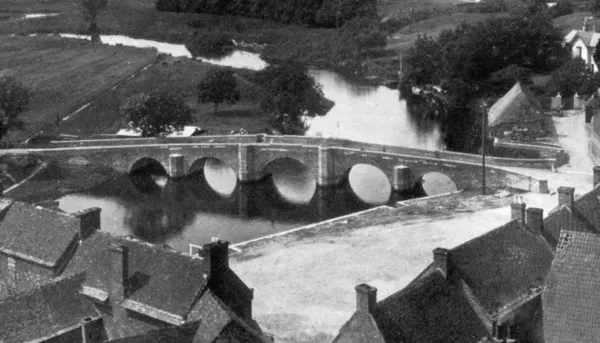
1788
John Mowlem born
John Mowlem was born in an ancient cottage in what is now Court Hill. He was the founder of the well known London contractors. He was a poor quarry boy until he made his way to London to seek his fortune. Guernsey granite rather than Purbeck stone brought him wealth and he retired to Swanage in 1844. He is responsible for the building of the monument on the sea front, the Albert the Good monument at the top of Court Hill (no longer there) and the Mowlem Institute. He bought land from the area which is now Kings Road to Ulwell.
1793
Church Hill Cottages
The cottages in Church Hill built
1801
First Census
The first census was taken in Swanage. 300 houses and a population of 1382.
1803
First Policeman
The first Policeman in Swanage started work here.
1807
Wesleyan chapel
The old Wesleyan chapel was built
1810
End of quarrying at Tilly Whim
Tilly Whim was last quarried in 1810
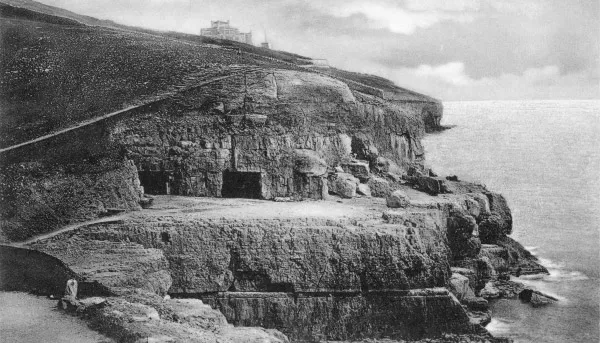
1816
George Burt was born
George Burt was born. He was the nephew of John Mowlem. He brought two items from London, the Wellington clock tower at Peveril and the 17th century facade from the Mercers Hall in Cheapside which he used for his new town hall in 1864. He bought land from Sentry Fields (at the top of Seymore Road) to Durlston. George Burt provided Swanage with a pure water supply, gas, drainage and the railway.
1823
Seafront Wall
The road along the seafront was built.
12 Oct 1826
First Cemetery
The parish's first detached cemetery is consecrated across the road from St Mary's Church.
1833
Queen Victoria Visits
Princess Victoria, later Queen Victoria, spent a night at the Manor House Hotel. It was later renamed the Royal Victoria Hotel
16 Nov 1834
The old brewery burns down
The Old Brewery situated between the goods yard and Kings Road is burnt to the ground. The flames shot up to 150 feet and two thirds of the bay were covered in half an inch of black ash.
1843
Town hall built
George Burt built the town hall
1845
Blue Pool
Blue Pool started to be dug for clay works
1855
St Marks school built
St Marks school at Herston was built
12 Oct 1856
First Cemetery
Swanage's second cemetery is built at the west end of Northbrook Road. The site coves 1 ½ acres.
1859
First pier built
Swanage old pier built
1862
Albert the Good
A monument in memory of Price Albert is erected by John Mowlem in the High Street above Court Hill.
1862
Cannon ball column
The cannon ball column on Swanage seafront is erected by John Mowlem to commemorate a battle between the Saxons and Danes in Swanage Bay.
1863
Mowlem Institute built
Mowlem Institute built by John Mowlem. He built it as a reading room "for the benefit and mutual improvement of the working class"
1863
Population of 1173
Population of Swanage was 1173
1869
Saint Marks church built
Herston (saint Marks) church built
1869
Swanage gasworks built
Swanage gasworks built
1874
Mount Scar first school opened
Swanage Combined School (now Mount Scar first school) opened.
1875
first lifeboat
The first lifeboat, the Charlotte Mary, came to Swanage
1875
Purbeck House built
Purbeck House built on the High Street
24 Jan 1879
Annie Margretta
The 500 ton Norwegian timber schooner Annie Margretta was lost beneath Ballard Head. Rescue efforts were hampered by strong easterly winds.
1880
Swanage Bay Frozen
Swanage Bay was frozen in the coldest winter on record for the area.
1882
Light House built
The light house was built
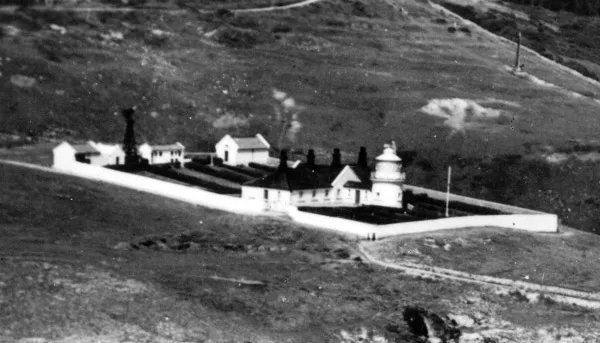
1882
Light House Opened
The light house was opened
1885
Swanage railway opened
Swanage railway opened linking Swanage to the mainline at Wareham
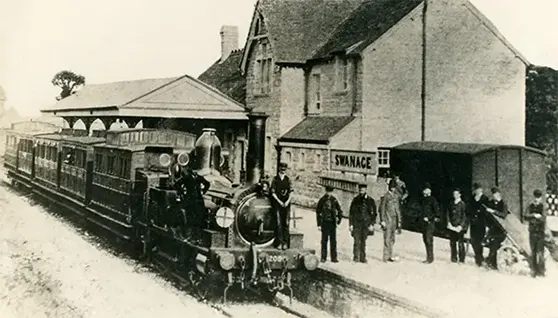
1887
Durlston Castle built
Durlston Castle was built by George Burt
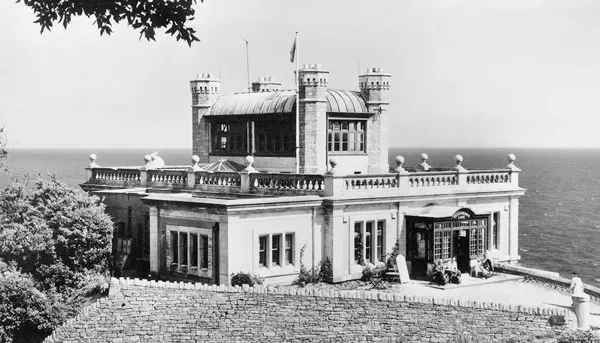
1889
Grand Hotel built
Grand Hotel built overlooking the bay
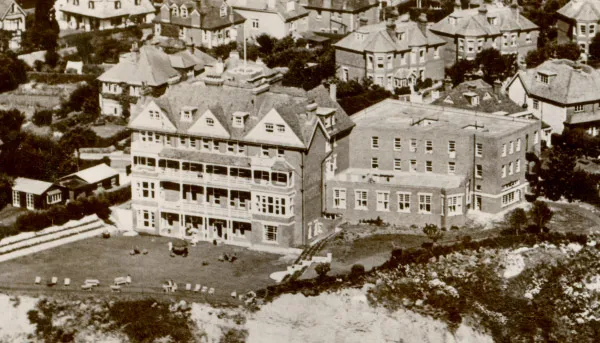
1890
Swanage Cottage Hospital built
Swanage Cottage Hospital was built in Queens Road on the southern side of Swanage
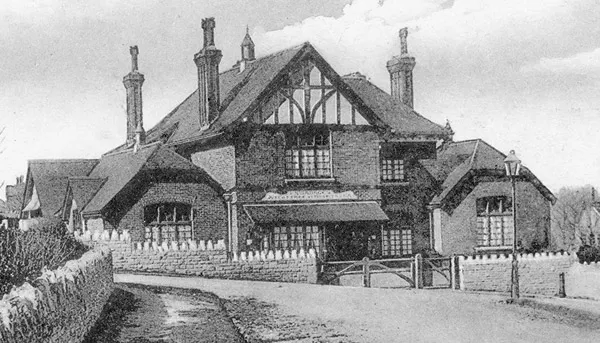
1892
Ballard Down Obelisk erected
After being demolished in London the Ballard Down Obelisk was transported to Swanage and erected by George Burt above the Ulwell Gap. It toppled over and was re-erected again the following year.
1896
Old Harry's Wife collapses
Old Harry's Wife collapses into the sea.
1896
New Pier built
Swanage pier was built at the cost of £10,000.
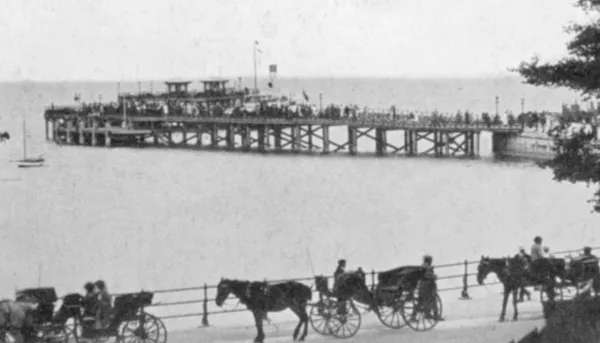
1899
Police Station built
The police station was built
1904
Sea wall built
The sea wall was built
1911
Swanage Conservative Club built
The Conservative Club in Kings Road is built by the third Earl of Eldon.
1912
Antartic Expedition
Edgar Evans left the house he was living in at 82 High Street to travel with Captain Robert Scott and three other companions on their ill-fated Antartic Expedition to the south pole.
10 Mar 1914
Swanage Flooded
Swanage town centre was flooded after heavy rain. The rain started on Saturday night and did not stop until Monday evening.
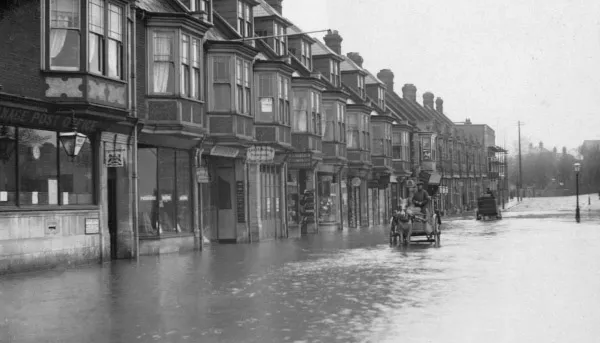
1921
Emmanuel Baptist Church
Emmanuel Baptist Church, the red brick built church in the High Street opens its doors for the first time. The foundation stones were laid the previous year by Beatrice Ellen Beebe and Pastor James Wicks.
12 Jul 1933
Edward, Price of Wales drops in on Swanage
Gale force winds forced the princes plane to make an emergency landing during a trip to Weymouth. The plane landed in a field near Godlingston Farm and the Prince was given a lift to Weymouth by Captin F.R. Bacon of the brickworks.
1936
The Mill Pond closes
The last sack of corn from Herson is ground in the Mill House at the Mill Pond off of Church Hill.
1940
Ballard Down Obelisk dismantled
The Ballard Down Obelisk was dismantled due to the fear that it might be used as a navigational aid by German pilots.
13 Jun 1940
HMS Abel Tasman sunk
While entering the entrance to Poole Harbour the HMS Abel Tasman hit a German mine and was blown to pieces. All 11 crew members were killed.
20 Apr 1942
Air Raid on Swanage
An air raid by German bombers damaged houses in Cornwall Road and buildings in Station Road
14 May 1942
Air Raid on Swanage
An air raid by German bombers damaged Wesley's Cottage.
13 Jul 1942
Air Raid on Swanage
An air raid by German bombers injured 3 people and damaged buildings in Park Road.
8 Aug 1942
Air Raid on Swanage
An air raid by two German Focke-Wulf FW-190 fighters that were each carrying single 250-kg bombs. They machine-gunned people on the beach and promenade before releasing their bombs, one of which destroyed the Westminster Bank in Institute Road and other fell in the sea. They killed 8 people and wounded 39. Several other buildings in Institute Road were damaged as were The Narrows in the High Street and St Mary's Church.
23 Aug 1942
Air Raid on Swanage
An air raid by German bombers killed 5 people and wounded 9. Buildings in the Square suffered extensive damage including Swanage Dairies and The Ship Inn.
1951
Purbeck Golf Club bought by Enid Blyton
The Isle of Purbeck Golf Club is purchased by children's author Enid Blyton and her husband Kenneth Darrel-Waters.
1954
Punch and Judy
The first Punch and Judy show came to Swanage
1956
All Saints Church
All Saints Church in Ulwell Road was built by George Parsons of Swanage.
1970
Agglestone Rock falls over
Agglestone Rock falls over onto it's side.
1972
Swanage railway closed
Swanage railway closed
1973
Ballard Down Obelisk rebuilt
The Ballard Down Obelisk was rebuilt by a group of Royal Engineers.
1974
Durlston Country Park
Durlston Country Park is opened to the public. Durlston Country Park is a 280 acre nature reserve stretched along the coast of the Isle of Purbeck near Swanage in Dorset, England. The park, which is part of the Jurassic Coast world heritage site, has been owned by Dorset county council since the early 1970s and is mostly open access.
1976
Belle Vue Cliffs bought by National Trust
Belle View Cliffs, west of Durlston Country Park is bought by the National Trust.
1979
Railway re-opened.
Swanage steam railway re-opened thanks to the work by volunteers.
1980
Dinosaur footprints
30 dinosaur footprints were discovered in Townsend Road
1990
Major Flooding
Swanage was flooded, an area covering most of the lower part of Northbrook road, Kings Road, Victoria Av was under water and the car park and King Georges field was under more than 7 feet of water. The town had to bee closed to traffic and many people were evacuated from their homes by boat.
1993
Flood scheme jetty built
Flood scheme jetty built at the end of Victoria Avenue to stop flooding in the future.
1995
Virtual Swanage launched
This website was first launched in 1995 with 4 pages!
1996
Last paddle steamer
The Embassy, the last paddle steamer to make regular trips to and from Swanage made its final visit here.
1997
First stage of flood scheme
First stage of the flood scheme finished
1999
Top of pier rebuilt
The top section of the main pier reopened after being completely rebuilt.
2000
Flood alleviation scheme finished
Swanage Flood alleviation scheme finished, it is supposed to stop the town from flooding ever again
2001
Major flooding
Major flooding in the town after a day's rain !!!
2001
Jurassic Coast Chartered
The Jurassic Coast is a World Heritage Site on the English Channel coast of southern England. The site stretches from Orcombe Point near Exmouth in East Devon to Old Harry Rocks near Swanage in East Dorset, a distance of 95 miles.
2002
Major Flooding
Swanage is flooded again after heavy rain. Flood water averaging eight inches in depth flooded a number of homes, shops and businesses in the town.
31 May 2002
Large Fire
Major fire in the town centre on 31st May. The chip shop in the square is completely gutted with the top 2 floors having smoke damage.
2005
Beach recharge scheme
Swanage Beach recharge scheme adds new sand back to the beach
2006
Lottery grant
Durlston Country Park win £3.2m from a lottery grant
2007
Corfe Castle repairs
Major repairs started on Corfe Castle
29 Jun 2011
Swanage Library reopens
Following an extensive refurbishment programme, Swanage Library reopened after six months of improvement work.
17 Nov 2011
Durlston Castle reopens
Work at Durlston Castle started in May 2010 with the help of a £5.5m Heritage Lottery Fund contribution. The Castle now has a new visitor centre, gallery, shop and cinema room.
Sep 2013
Swanage opens first secondary free school
The Swanage School is an independently run secondary school which will be moving to a new purpose built school on the old Middle School site in 2014
1 Dec 2013
Seafront Stabilisation Project Starts
Work started on the new seafront stabilisation project and work in the Broad Road car park to reduce the risk of land slides.
Feb 2014
Flooding and Cliff Falls
After strong storms parts of the lower High Street had flooding and large sections of the cliffs at Ocean Bay collapsed onto beach huts and the beach
25 Apr 2014
The Swanage School
The new Swanage School built on the site of the older Swanage Middle School opened.
Aug 2019
Purbeck Coast radio Station
In August 2019 a new local community radio startion was launched which is based on Swanage pier. You can listen on 101.2FM
2022
Demolition of Swanage Grammar School
Work started on the demolition of Swanage Grammar School in Northbrook Road established in 1929 and closed in 1974. A new housing estate is planned for the old Grammar School site and fields.
